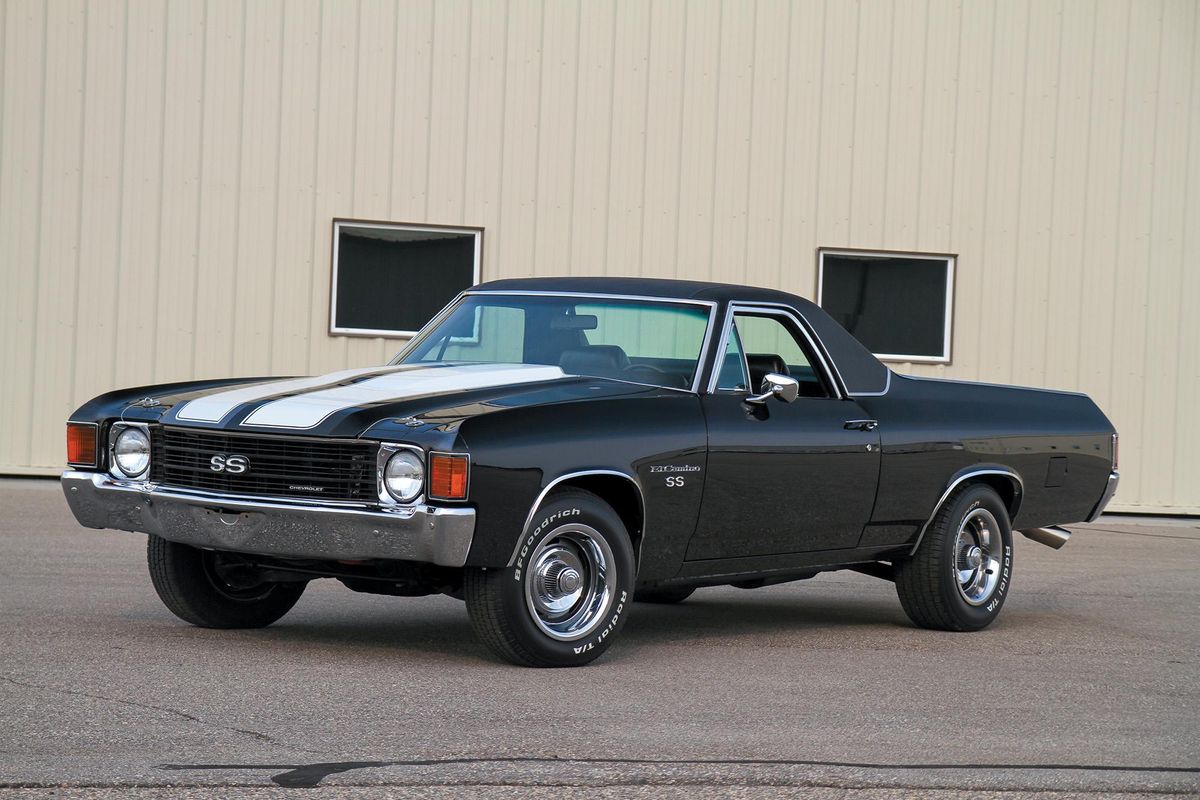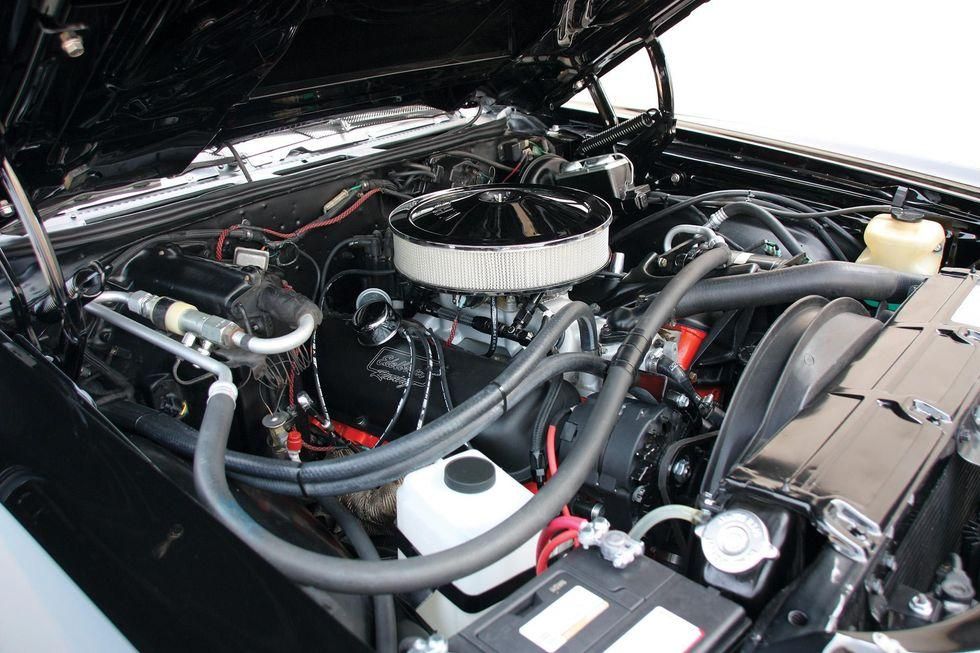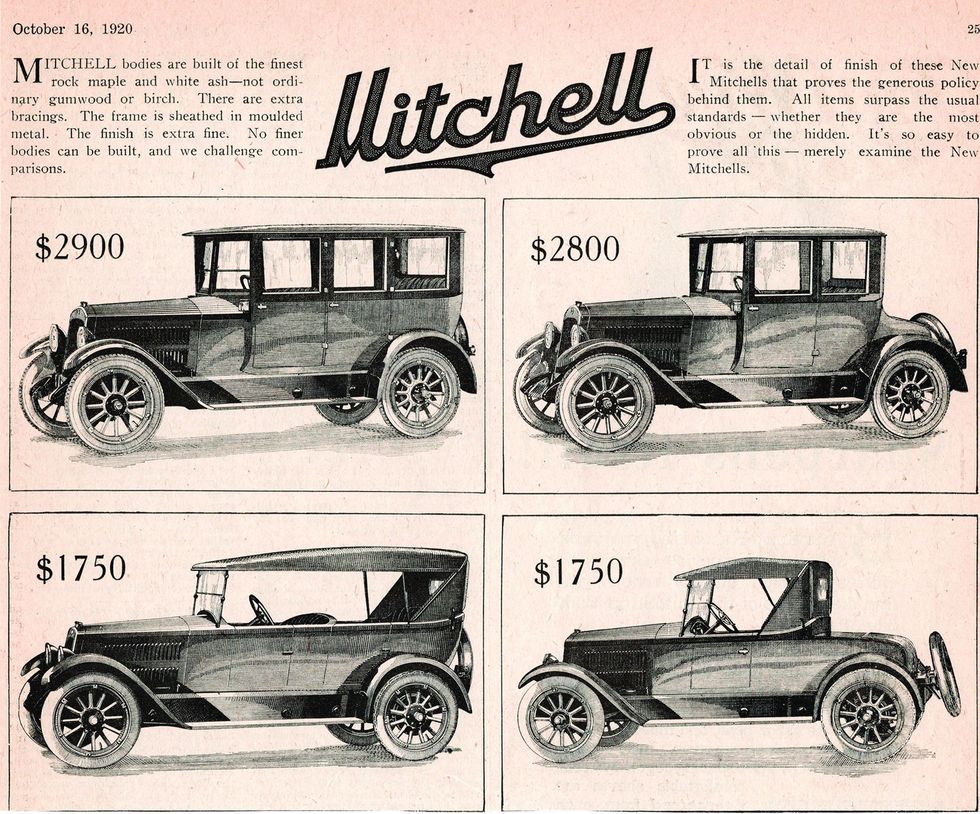America has always been too rich for a car like the Chevrolet El Camino, Ford Ranchero, or Dodge Rampage. The car/truck hybrid is very popular in Australia, where it was invented in the 1930s, and is popularly known as the “ute” —short for “coupe utility.” Originally, they were simply coupe bodies with a slab-sided pickup box where the trunk would be on a regular coupe. That was a common home-built modification even before, but the factory-built examples proved highly successful. Down Under, where things are a lot more rural and the economy has never been quite as robust as in the United States, utes made a perfect solution for one-car families.
Here, if the family needed a pickup, it was likely to be a full-blown half-ton model supplementing the family car. Still, that demand was not very great even in itself, as America’s population was majority-urban by 1920 and the family farm steadily gave way to larger operations in the ensuing decades. It wasn’t until American carmakers made pickups as luxurious as passenger cars that they started selling in their biggest numbers—and in that way, they are essentially the American equivalent of the ute, combining car comfort and pickup utility, but in a heavy-duty, often 4x4 package.
Putting together the restoration team

Photo by Matthew Litwin and David Conwill
Australia, of course, does have pickups, and America has had its utes. Given the reverse-ute heritage of the modern pickup, however, it’s perhaps more interesting to view an SS 396 El Camino as akin to the 1990–’93 Chevrolet 454 SS muscle truck than the Chevelle on which it is based. In today’s more pickup-centric car scene, the El Camino is more relevant than it ever was, and Roger Peterson, of Osage, Minnesota, who restored this one, was way ahead of the curve on them. He’d been tracking this one for years before it came up for sale.
“I’ve known about this car since 1986 or ’87. The car was actually bought by my neighbor when I was a kid. Later, it passed to another owner who had it painted in ’90 or ’91 and he had it until I got it in 2013.”
That other owner, named Bruce, was a friend of Roger’s, and he got to work on the El Camino during the time it was his, including swapping the Positraction unit from his race car into the 3.31:1-geared 12-bolt of what was then Bruce’s El Camino. Little did Roger know, he’d eventually get the Posi back, along with the car now wrapped around it.
“I did some carpentry work for Bruce, and we traded,” he says. Roger didn’t set out to restore the car, either, as Bruce had already done things like having the original 402 rebuilt and hopped up, circa 2000, by Lynn Johnson at Auto Value in Park Rapids, Minnesota, which happens to be directly across the street from the lot where the El Camino was sold. The process involved a 0.030-inch overbore (the nominal 396, which was really a 402 from Chevy in ’72, is now 408 cubic inches), Sealed Power forged-aluminum pistons, a Melling hydraulic camshaft, a Pertronix electronic ignition, and Hooker Super Comp stainless-steel headers.
At the same time, Scott McCaren rebuilt the TH-400 transmission. Coincidentally, Roger is friends and neighbors with Scott’s brother, Steve—in fact, it would pan out that most of the folks who worked on this car knew it and one another.
“Everybody who has worked on it, besides the paint guy, knew the history of the car,” Roger says.
Oh, deer

That’s the original LS3 402 in there, fully rebuilt and bored out to now displace 408 cubic inches.
Photo by Matthew Litwin and David Conwill
It proved an ideal informal team that combined well to do the car justice in its unintended restoration—emphasis on unintended. While on a trip to have the car’s exhaust system changed, a deer bounded out in front of Roger—too suddenly for evasion or brakes. The deer managed to tag not only the nose of the car, but also the passenger’s side, leaving it drivable but mangled.
“It had been hit in the right front grille and bumper; the collision pushed the fender into the door. The deer got the grille, then spun around, and got the quarter panel too.”
The restoration begins in earnest
Roger accepted an estimate to have the damage repaired back to driver status, but then the car sat, “probably for three or four years in my shop” before he decided to take charge of the project directly.
He found Agathers Kustoms Autobody in Perham, Minnesota, which was more than up to the task. As things came apart for repair, it seemed that the injury had come at a fortuitous time —there was a lot of hidden decay. The car proved to need inner and outer quarter panels, rockers, and a new tailgate. It also could have used new doors, had they been available.
“We couldn’t find any doors, so they repaired the ones we had. The guys are just magicians with sheetmetal,” Roger notes.
With the car undergoing such complete bodywork, there came the question of color. Roger elected to stick with the existing black, rather than return to factory original.
“The car originally was Placer Gold with a white-vinyl top. It was black when I got it and was blue back in the ’80s.” Roger also elected to have a white stripe hand-painted by the guys at the body shop. At this point, the car has been black longer than it was gold.
The suspension and brakes were left all original but checked and confirmed as within specification.
“It was a full, on-frame restoration. We never completely gutted the interior, but otherwise we went through everything on the car,” Roger says.
Assembly-line alterations
Inside, there are slight deviations from factory-spec, but some appear to date back to when the car was new —likely concessions to “parts on hand” when trying to meet production quotas. Others were made by previous owners and were insufficiently obtrusive to warrant correction.
“The speaker boxes were in the car when I got it. I just left them in there.” There is an aftermarket AM/FM/Bluetooth radio, too, but the sweet sound of the three-inch stainless exhaust running through Magnaflow mufflers is the preferred soundtrack while driving.
Similarly, what was originally a bench-seat, column-shift car now sports buckets and a console. Further details Roger doesn’t plan to change, even while he attempts to conserve the car’s history.
Recall transmission-rebuilder Scott McCaren’s brother, Steve, a neighbor of Roger’s in Osage?
Roger reports, “Steve still has the factory bench seat for this car and the steering column —which he’s going to give me back. It’s going to stay how it is, but if [those parts] are gone, you’ll never find them again, you know?”
Too nice to drive now?
In fact, conservation now seems to be the name of the game. Although purchased as a driver, restoration has made this El Camino a bit too precious to drive —not least of which because of the dramatically increased values of restored, big-block intermediates these days. Roger has only put around a hundred miles on the car since restoration, and he permitted us to take the wheel for a bit on the day of photography.
We guarantee that there is nothing like torque to put a smile on your face. It did ours. Maybe it’s time to seek out an El Camino for yourself and restore it.
Owner's View

Photo by Matthew Litwin and David Conwill
I just planned on driving the car because it was a nice driver. I did some cosmetic things to it, got it fixed up pretty nice, and I was going to Detroit Lakes for exhaust, and I hit a deer with it. That’s where it all started. I got the new exhaust put on it, brought it home, and the car just sat. I went and got estimates on it, but the guy never started work. I’ve got a 40 x 50 shop. It’s not a Jay Leno shop, but it’s pretty nice. So, I started checking around for a body guy. Initially it was going to be a whole new front clip and paint the car, but once we got into it, it needed quarter panels, inner quarter panels, rocker panels, and a tailgate.—Roger Peterson
From Your Site Articles
Related Articles Around the Web















































